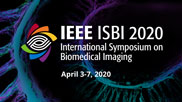Collection:

Recent years have witnessed the emergence and increasing popularity of 3D medical imaging techniques with the development of 3D sensors and technology. However, achieving geometric invariance in the processing of 3D medical images is computationally expensive but nonetheless essential due to the presence of possible errors caused by rigid registration techniques. An alternative way to analyze medical imaging is by understanding the 3D shapes represented in terms of point-cloud. Though in the medical imaging community, 3D point-cloud processing is not a ``go-to'' choice, it is a canonical way to preserve rotation invariance. Unfortunately, due to the presence of discrete topology, one can not use the standard convolution operator on point-cloud. {it To the best of our knowledge, the existing ways to do ``convolution'' can not preserve the rotation invariance without explicit data augmentation.} Therefore, we propose a rotation invariant convolution operator by inducing topology from hypersphere. Experimental validation has been performed on publicly available OASIS dataset in terms of classification accuracy between subjects with (without) dementia, demonstrating the usefulness of our proposed method in terms of begin{inparaenum}[bfseries (a)] item model complexity item classification accuracy and last but most important item invariance to rotations.end{inparaenum}
- IEEE MemberUS $11.00
- Society MemberUS $0.00
- IEEE Student MemberUS $11.00
- Non-IEEE MemberUS $15.00
Videos in this product
An augmentation-Free Rotation Invariant Classification Scheme on Point-Cloud and Its Application to Neuroimaging
Recent years have witnessed the emergence and increasing popularity of 3D medical imaging techniques with the development of 3D sensors and technology. However, achieving geometric invariance in the processing of 3D medical images is computationally expensive but nonetheless essential due to the presence of possible errors caused by rigid registration techniques. An alternative way to analyze medical imaging is by understanding the 3D shapes represented in terms of point-cloud. Though in the medical imaging community, 3D point-cloud processing is not a ``go-to'' choice, it is a canonical way to preserve rotation invariance. Unfortunately, due to the presence of discrete topology, one can not use the standard convolution operator on point-cloud. {it To the best of our knowledge, the existing ways to do ``convolution'' can not preserve the rotation invariance without explicit data augmentation.} Therefore, we propose a rotation invariant convolution operator by inducing topology from hypersphere. Experimental validation has been performed on publicly available OASIS dataset in terms of classification accuracy between subjects with (without) dementia, demonstrating the usefulness of our proposed method in terms of begin{inparaenum}[bfseries (a)] item model complexity item classification accuracy and last but most important item invariance to rotations.end{inparaenum}
 Cart
Cart Create Account
Create Account Sign In
Sign In
